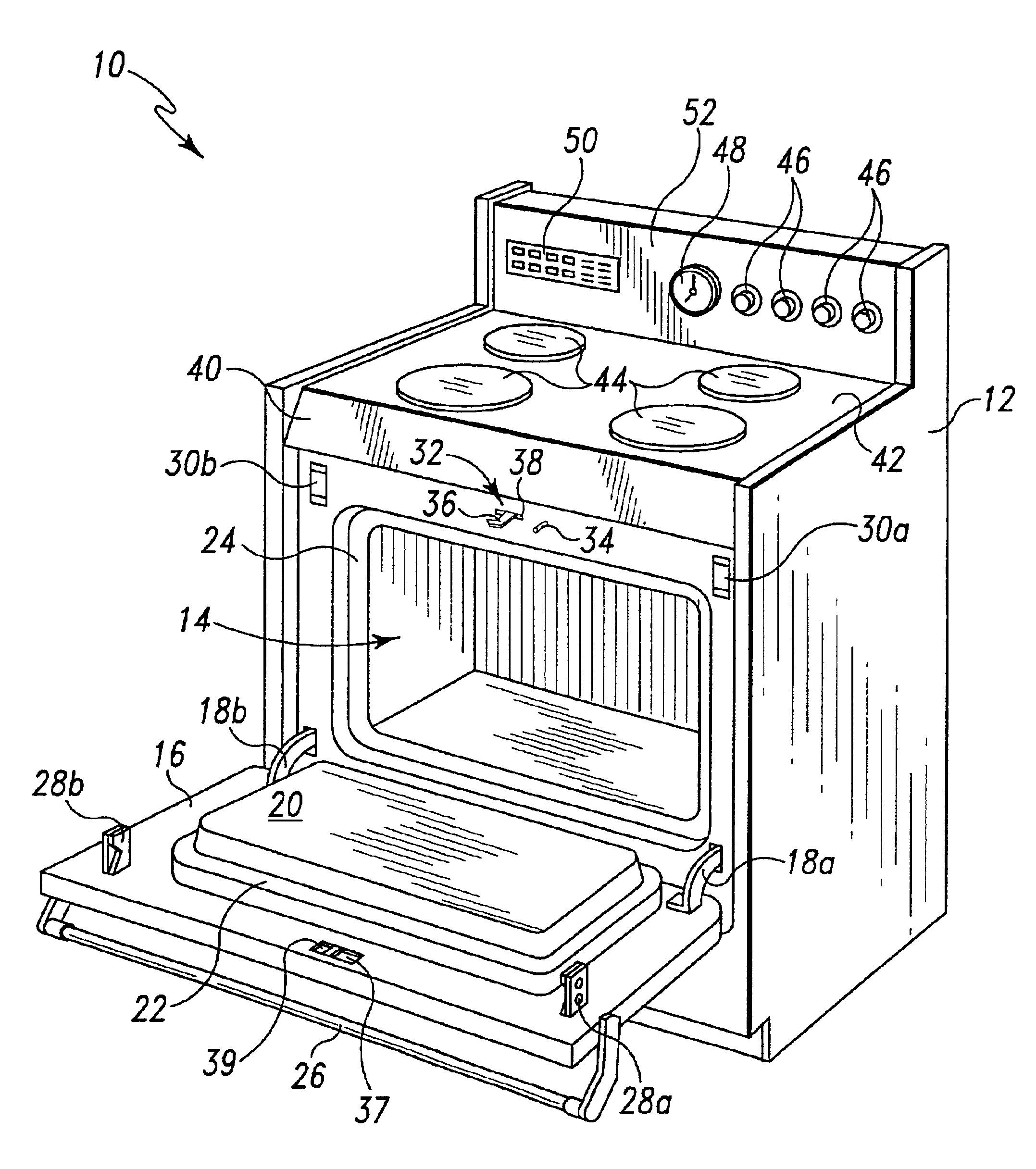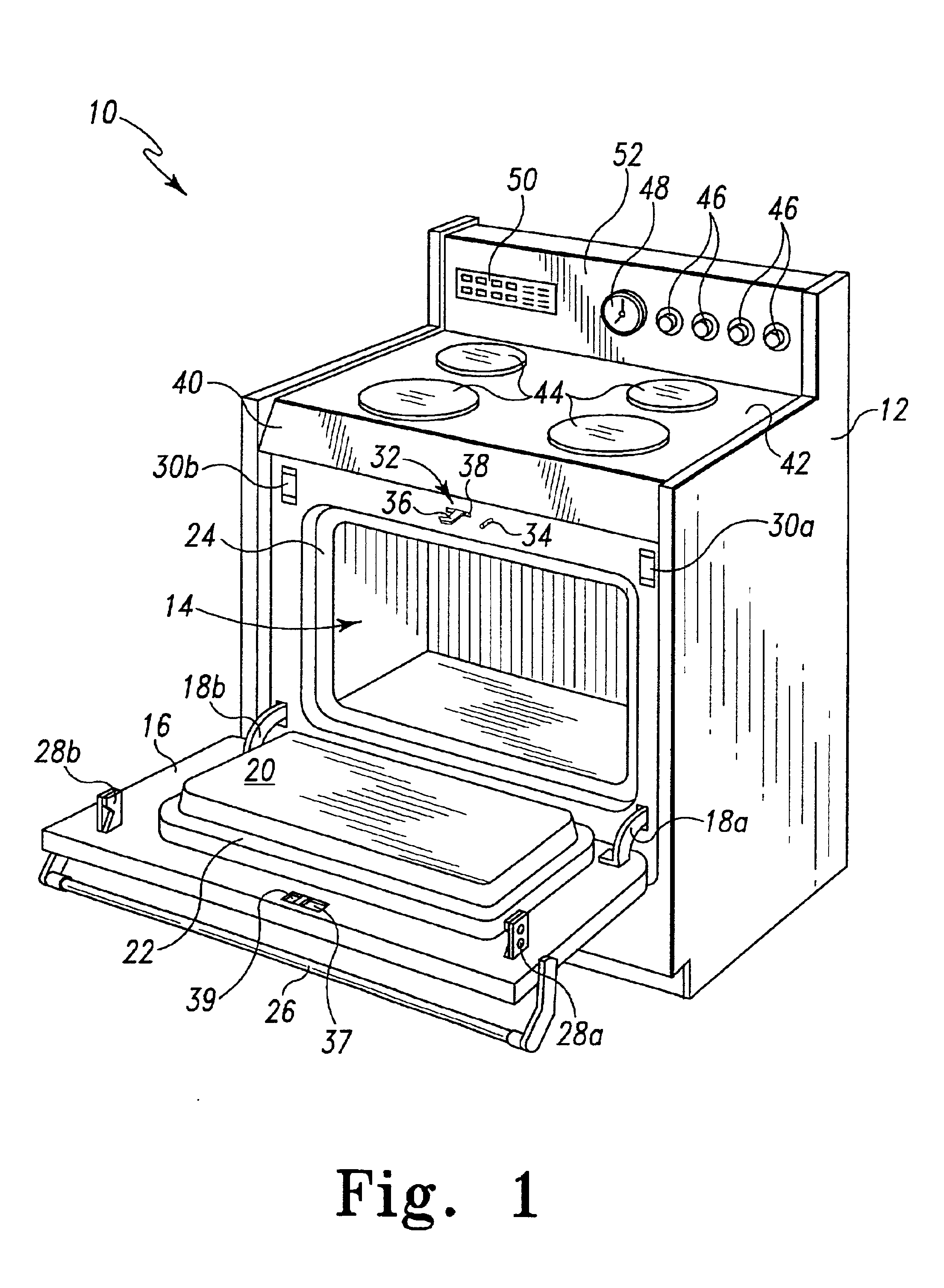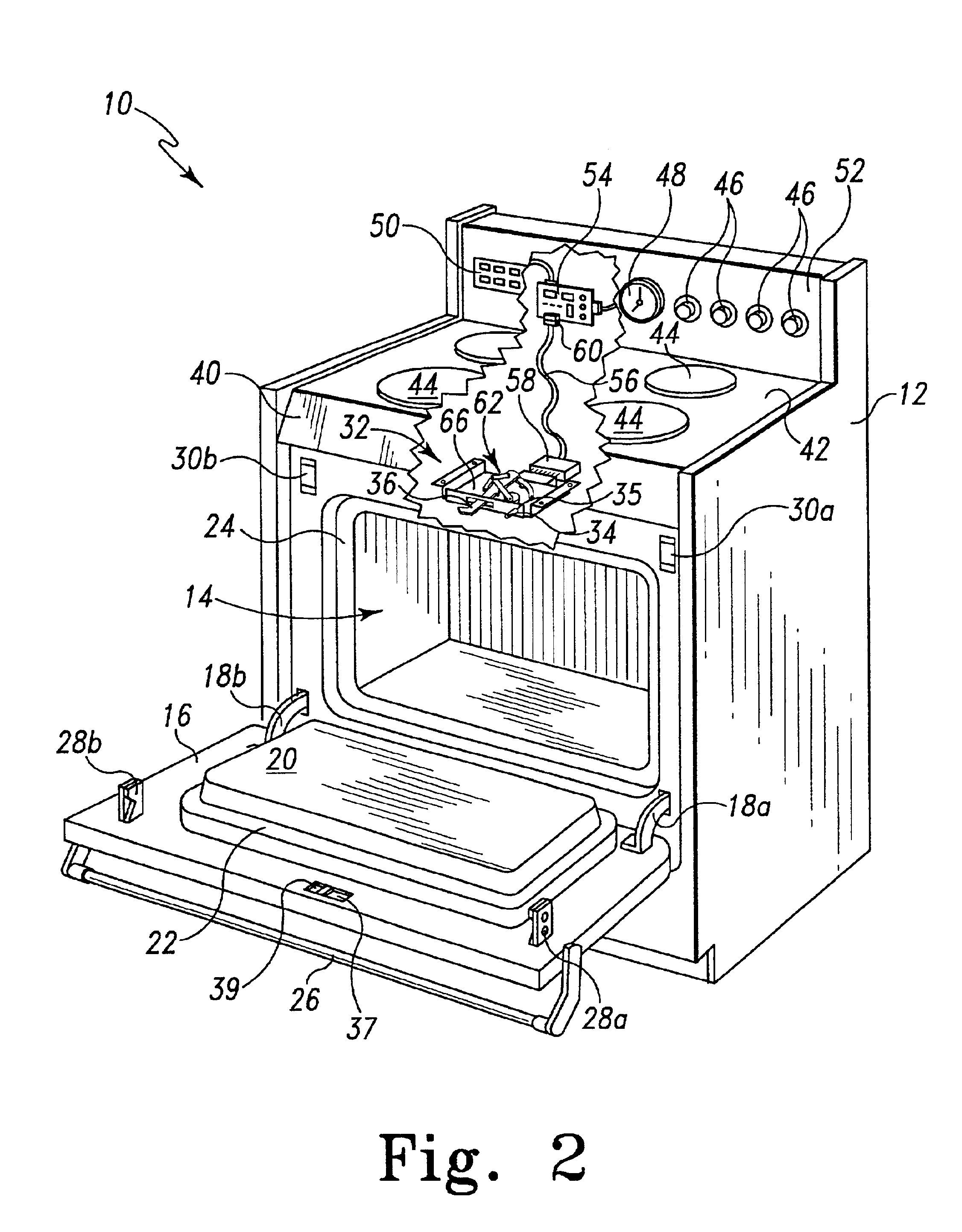Door latch mechanism and associated components for a self-cleaning oven
a self-cleaning oven and latch mechanism technology, applied in the field of self-cleaning ovens, can solve the problems of current locking mechanism undesirably stalling, higher cost, and higher strength or force of locking mechanism, and achieve the effect of reducing the likelihood of stalling, reducing the speed of latching, and increasing the mechanical advantage at a clamping
- Summary
- Abstract
- Description
- Claims
- Application Information
AI Technical Summary
Benefits of technology
Problems solved by technology
Method used
Image
Examples
Embodiment Construction
Referring to FIG. 1, there is depicted an oven, range, or stove (and as used hereinafter, collectively oven) generally designated 10, representing all forms of ovens, ranges, and stoves in which the subject inventions may be embodied. The oven 10 has a frame or body 12 that defines an oven portion or cooking chamber 14. The cooking chamber includes cooking elements (not shown) such as resistive heating elements, or the like such as is known. A door 16 is attached to the frame 12 by at least two hinges 18a and 18b that extend into the frame 12. The door 16 is adapted to open and close relative to the cooking chamber 14. Particularly, the door 16 is adapted to pivot into open and closed positions relative to the cooking chamber 14. The hinges 18a and 18b extend into the frame 12 and are configured to allow the door 16 to open and close. The hinges 18a and 18b also stop movement of the door 16 at the position shown in FIG. 1 (a fully open position). While not shown, the door 16 may inc...
PUM
 Login to View More
Login to View More Abstract
Description
Claims
Application Information
 Login to View More
Login to View More - R&D
- Intellectual Property
- Life Sciences
- Materials
- Tech Scout
- Unparalleled Data Quality
- Higher Quality Content
- 60% Fewer Hallucinations
Browse by: Latest US Patents, China's latest patents, Technical Efficacy Thesaurus, Application Domain, Technology Topic, Popular Technical Reports.
© 2025 PatSnap. All rights reserved.Legal|Privacy policy|Modern Slavery Act Transparency Statement|Sitemap|About US| Contact US: help@patsnap.com



